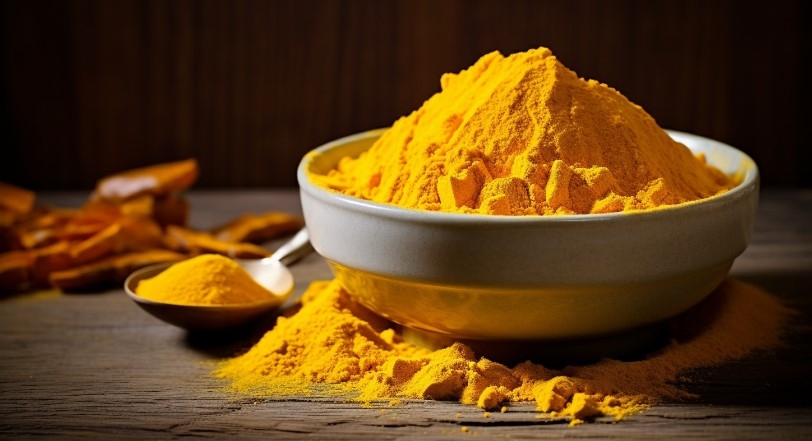クルクミン 天然技術

Curcumin powder
It is well known that although the use of NSaids is not recommended, many enthusiasts and athletes still use them to combat post-workout soreness and inflammation. The problem is that NSaids seem to hinder healing in the first stage, do not necessarily restore muscle performance, and may hinder recovery.
In addition, long-term use may have negative effects on the nervous system and damage the liver. クルクミン, in contrast, limits inflammation and oxidative stress without the negative effects of NSaids, allowing athletes to train harder and more frequently.
It works through a dose-dependent reduction of an enzyme called cyclooxygenase-2, which is responsible for converting arachidonic acid into prostaglandins and thromboxins, two lipid compounds that trigger swelling and painful sensations. This is similar to the effect of NSaids, but is less pronounced and has no side effects.
In a more comprehensive paper, the authors mention some examples of human studies in which curcumin reduces inflammation and soreness during training, and the gist is as follows:
One study found that when curcumin (5.3 mg/kg) was administered 48 hours before a downhill run, subjects accumulated less muscle damage (as measured by MRI) and serum IL-8(a pro-inflammatory substance) decreased significantly 2 hours after exercise.
Subjects who performed 60 leg lifts (centrifugation only) at 110% of 1RM were shown to have reduced serum creatine kinase (an indicator of muscle damage) and reduced IL-8 levels after taking 400 mg of curcumin 2 days before and 4 days after the test.
Subjects who took 1,000 mg of curcumin daily did not lose muscle strength after a downhill run.
Subjects training for the half-marathon took 1,000 mg of curcumin (combined with pomegranate extract, another polyphenol) per day. Despite training a similar number of times in the 30 days before the half-marathon as the placebo group, they increased their training miles by 11 percent and their calorie consumption by 20 percent compared to the placebo group.
The results of these studies, combined with all other relevant data, led the authors of the paper to speculate that steadily increasing the dose of クルクミン during a long-term training program (prior to competition) would be highly beneficial for athletes.
The authors also pointed out three main effects that oral curcumin supplements can have directly, namely, reducing biomarkers of inflammation; Reduce muscle damage; Reduces muscle pain. In addition, they determined that doses as high as 400 milligrams a day are needed to affect systemic inflammation, and more than 1,000 milligrams a day are needed to reduce both inflammation and muscle soreness.
So, for a long-term training plan: “…… It may be necessary to gradually increase the dose of curcumin supplement to match the amount of muscle damage expected from exercise.” They then constructed a novel training model through which curcumin can improve athletes’ training and competition performance:
When training for an event, athletes first take 400 to 600 milligrams of curcumin per day. Over time, the amount of curcumin consumed per day increased steadily, from the “starting” dose of 400 mg to 600 mg, and then gradually increased to 600 to 800 mg per day; Then 800 to 1,000 milligrams a day; Finally, as the race approached, the dose peaked at 1,500 milligrams a day.
During several days of particularly intense training, when a lot of muscle damage occurs, they also prescribe regular “booster” doses of 500 to 1000 mg. The model is pretty cool indeed, but whether you’re an endurance runner, weightlifter, or bodybuilder, it reflects a simple fact – in addition to the many health benefits we mentioned earlier, curcumin really is an excellent booster for people who exercise regularly.
Reference material
- https://www.webmd.com/diet/health-benefits-curcumin2.McFarlin BK et al. Does Acute Improvement in Muscle Recovery with Curcumin Supplementation Translate to Long-Term Training? Journal of Science in Sport and Exercise, Volume 1, pp. 203-207, November 26. 2019.
バックヴィータ
